Common Workplace Safety Hazards and How to Prevent Them
Date Posted:12 June 2024
Common workplace safety hazards include slips, trips, and falls; manual handling and ergonomic issues; electrical hazards; exposure to hazardous substances; machinery and equipment risks; fire hazards; and workplace violence.
Ensuring workplace safety is a critical responsibility for employers and employees alike. Identifying common hazards and implementing preventive measures can significantly reduce the risk of accidents and injuries. This blog explores some of the most common workplace safety hazards and provides practical strategies to prevent them.
1. Slips, Trips, and Falls
Hazards
Slips, trips, and falls are among the leading causes of workplace injuries. These accidents often occur due to wet or uneven surfaces, cluttered walkways, poor lighting, and improper footwear.
Prevention
- Housekeeping: Keep work areas clean and free of clutter. Regularly clean spills and remove obstructions from walkways.
- Flooring: Use non-slip mats in areas prone to wetness and ensure floors are even and well-maintained.
- Lighting: Ensure adequate lighting in all work areas to prevent tripping hazards.
- Footwear: Encourage the use of appropriate, non-slip footwear.
2. Manual Handling and Ergonomic Hazards
Hazards
Improper lifting, carrying, pushing, and pulling of heavy loads can cause musculoskeletal disorders. Poor workstation design can lead to repetitive strain injuries.
Prevention
- Training: Provide training on proper lifting techniques and the use of mechanical aids.
- Ergonomics: Design workstations to fit the user, with adjustable chairs, desks, and equipment to maintain good posture.
- Mechanical Aids: Use trolleys, lifts, and other aids to reduce manual handling tasks.
3. Electrical Hazards
Hazards
Electrical hazards, such as shocks, burns, and fires, can result from faulty wiring, overloaded circuits, or improper use of equipment.
Prevention
- Inspections: Conduct regular inspections of electrical systems and equipment.
- Qualified Personnel: Ensure only qualified personnel handle electrical repairs and maintenance.
- PPE: Use proper personal protective equipment (PPE) and ensure all electrical devices are properly grounded.
- Training: Train employees on electrical safety protocols and emergency response procedures.
4. Hazardous Substances
Hazards
Exposure to chemicals, dust, fumes, and other hazardous substances can cause respiratory problems, skin irritation, and other health issues.
Prevention
- Storage: Store hazardous substances in appropriate containers and clearly label them.
- Ventilation: Ensure adequate ventilation in areas where hazardous substances are used.
- PPE: Provide appropriate PPE, such as gloves, masks, and eye protection.
- Training: Train employees on the safe handling, use, and disposal of hazardous substances.
5. Machinery and Equipment Hazards
Hazards
Accidents involving machinery and equipment can lead to serious injuries, including cuts, crush injuries, and amputations.
Prevention
- Guarding: Install safety guards on machinery to prevent contact with moving parts.
- Lockout/Tagout: Implement lockout/tagout procedures to ensure machines are properly shut down during maintenance.
- Maintenance: Regularly inspect and maintain equipment to ensure it is in safe working condition.
- Training: Provide comprehensive training on the safe operation of machinery and equipment.
6. Fire Hazards
Hazards
Fires can result from faulty wiring, flammable materials, and improper handling of combustible substances.
Prevention
- Fire Safety Plans: Develop and communicate a fire safety plan, including evacuation routes and assembly points.
- Fire Extinguishers: Ensure fire extinguishers are accessible and employees are trained to use them.
- Inspections: Conduct regular inspections of electrical systems and storage areas for flammable materials.
- No Smoking Policies: Enforce no-smoking policies in areas with flammable substances.
7. Workplace Violence
Hazards
Workplace violence, including physical assaults and verbal threats, can lead to injuries and psychological trauma.
Prevention
- Policies and Training: Develop and enforce a zero-tolerance policy for workplace violence. Train employees on conflict resolution and how to report incidents.
- Security Measures: Implement security measures, such as surveillance cameras and controlled access to the workplace.
- Support Systems: Provide support systems, such as counseling services, for employees affected by workplace violence.
Summary
Common workplace safety hazards include slips, trips, and falls; manual handling and ergonomic issues; electrical hazards; exposure to hazardous substances; machinery and equipment risks; fire hazards; and workplace violence. Preventive measures such as proper training, maintenance, use of PPE, safety protocols, and fostering a culture of safety can significantly reduce the risk of accidents and injuries, ensuring a safer workplace for all.



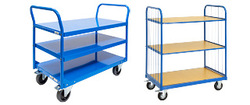

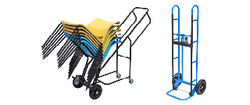


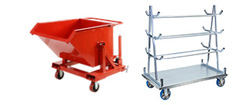

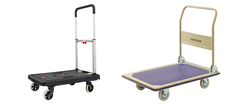
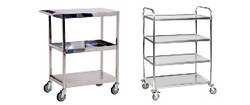

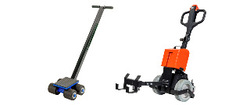
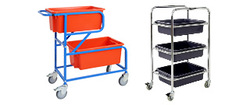
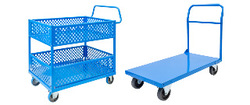
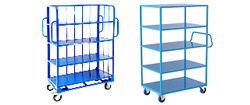
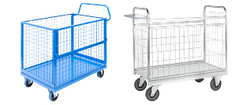
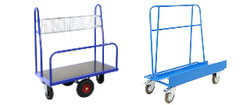
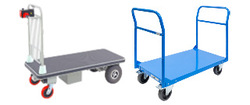
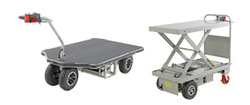
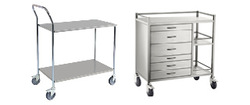
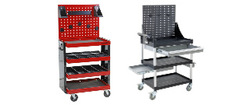
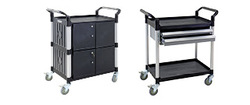
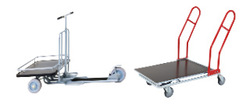
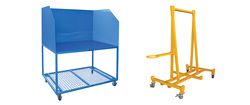



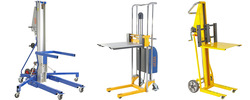



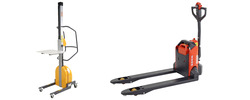
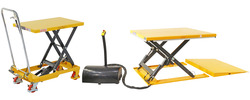

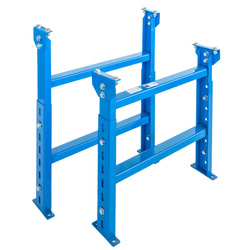

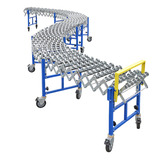



















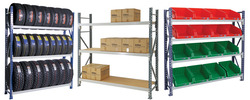
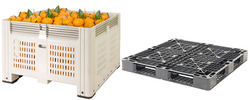
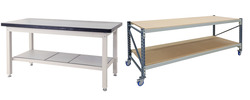
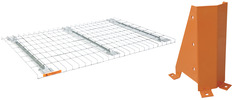




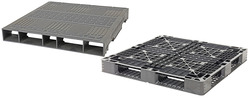

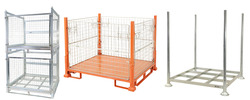

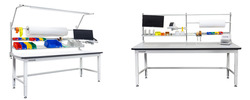






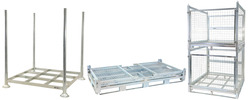
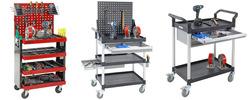


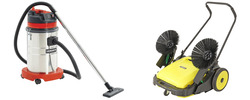





















































 Trolleys / Hand Trucks
Trolleys / Hand Trucks 2 Tier Trolleys
2 Tier Trolleys 3 Tier Trolleys
3 Tier Trolleys Aluminium Trolleys
Aluminium Trolleys Appliance & Hand Trucks
Appliance & Hand Trucks Cage Trolleys
Cage Trolleys Cleaning Carts & Trolleys
Cleaning Carts & Trolleys Construction Trolleys
Construction Trolleys Dollies
Dollies Foldable Trolleys
Foldable Trolleys Hospital Trolleys
Hospital Trolleys Laundry/Linen Trolleys
Laundry/Linen Trolleys Load Skates & Tow Tugs
Load Skates & Tow Tugs Mail / Office Trolleys
Mail / Office Trolleys Multi Purpose Trolleys
Multi Purpose Trolleys Multi-Tier Shelf Trolleys
Multi-Tier Shelf Trolleys Order Picking Trolleys
Order Picking Trolleys Panel Cart Trolleys
Panel Cart Trolleys Platform Trolleys
Platform Trolleys Powered Trolleys
Powered Trolleys Stainless Steel Trolleys
Stainless Steel Trolleys Tool Trolleys
Tool Trolleys Utility Carts
Utility Carts Warehouse Trolleys
Warehouse Trolleys Custom Trolleys
Custom Trolleys Lifting Equipment
Lifting Equipment Forklift Attachments
Forklift Attachments Jib Attachments
Jib Attachments Lifting Hoists & Pallet Hooks
Lifting Hoists & Pallet Hooks Manual Stackers & Lifters
Manual Stackers & Lifters Pallet Jacks
Pallet Jacks Pallet Lifters
Pallet Lifters Pallet Rotators & Dispenser
Pallet Rotators & Dispenser Powered Pallet Trucks & Electric Lifters
Powered Pallet Trucks & Electric Lifters Scissor Lift Trolleys and Tables
Scissor Lift Trolleys and Tables Conveyor Equipment
Conveyor Equipment Conveyor Frames
Conveyor Frames Conveyor Stands
Conveyor Stands Roller Conveyors
Roller Conveyors Skate Wheel Conveyors
Skate Wheel Conveyors Access Equipment
Access Equipment Container & Yard Ramps
Container & Yard Ramps Step Stools & Ladders
Step Stools & Ladders Work Platforms & Crane Cages
Work Platforms & Crane Cages Drum Handling
Drum Handling Drum Storage & Bunding
Drum Storage & Bunding Drum Trolleys & Lifters
Drum Trolleys & Lifters Forklift Drum Handling
Forklift Drum Handling Containment & Spillage
Containment & Spillage Aerosol Cans Storage Cages
Aerosol Cans Storage Cages Bunded Pallets & Storage
Bunded Pallets & Storage Corrosive Goods Storage Cabinets
Corrosive Goods Storage Cabinets Flammable Liquid Cabinets
Flammable Liquid Cabinets Forklift Gas Storage Cages
Forklift Gas Storage Cages Gas Cylinder Storage
Gas Cylinder Storage Site Storage
Site Storage Spill Kits
Spill Kits Stillage Cages
Stillage Cages Waste Handling
Waste Handling Bin Lifters & Tippers
Bin Lifters & Tippers Plastic Waste Bins and Carts
Plastic Waste Bins and Carts Steel Waste and Tipping Bins
Steel Waste and Tipping Bins Storage Equipment
Storage Equipment Heavy Duty Cabinets & Benches
Heavy Duty Cabinets & Benches Heavy Duty Shelving
Heavy Duty Shelving Mega Bins & Pallets
Mega Bins & Pallets Packing Benches
Packing Benches Pallet Racking Accessories
Pallet Racking Accessories Parts Trays & Stor-Pak Bins
Parts Trays & Stor-Pak Bins Pegboard & Louvre Panels
Pegboard & Louvre Panels Plastic Bins
Plastic Bins Plastic Handling Solutions Bins
Plastic Handling Solutions Bins Plastic Pallets
Plastic Pallets Stack & Nest Bins
Stack & Nest Bins Storage Cages
Storage Cages Workplace Equipment
Workplace Equipment Workbenches
Workbenches Modular Workbenches
Modular Workbenches Electric Height-Adjustable Workbenches
Electric Height-Adjustable Workbenches Floor Matting
Floor Matting Industrial Weighing Scales
Industrial Weighing Scales Pallet Wrapping & Packaging Machinery
Pallet Wrapping & Packaging Machinery Ramps
Ramps Stationery Cupboards
Stationery Cupboards Storage and Stillage Cages
Storage and Stillage Cages Tool Trolleys
Tool Trolleys Tooling Cabinets
Tooling Cabinets Wheelie Bins
Wheelie Bins Workshop Equipment
Workshop Equipment Safety Equipment
Safety Equipment Gloves and PPE
Gloves and PPE Pallet Rack Post Protectors
Pallet Rack Post Protectors Safety Barriers & Bollards
Safety Barriers & Bollards Safety Knives & Cutters
Safety Knives & Cutters Signs and Traffic Supplies
Signs and Traffic Supplies Tool & First Aid Boxes
Tool & First Aid Boxes Construction Equipment
Construction Equipment Concrete Equipment
Concrete Equipment General Site Equipment
General Site Equipment Lifting Equipment
Lifting Equipment Site Storage
Site Storage Waste
Waste  MHA's Specials
MHA's Specials










